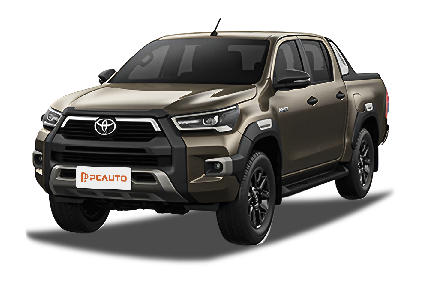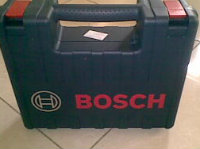Q
Which is better, Hilux or D-Max?
Both the Toyota Hilux and Isuzu D-Max have their unique advantages, making it challenging to simply declare one as better than the other. The Hilux, a model under the Toyota brand, is renowned for its reliability and durability, with many owners reporting that its mechanical structure is stable enough to handle various complex and harsh road conditions. Its extensive maintenance network makes post-purchase upkeep convenient; in remote areas, finding parts and repair services is relatively easy. The price range for the Hilux varies from RM 89,100 to RM 169,080, with multiple powertrain configurations available.
On the other hand, the Isuzu D-Max shines in terms of ride comfort and interior quality. Its interior design places a strong emphasis on ergonomics, offering comfortable seating and a smooth driving experience. If you frequently navigate challenging terrains and prioritize the vehicle's durability and stability, the Hilux is an excellent choice. However, if you place a higher value on driving comfort and interior quality, the D-Max may be more suitable for your needs.
Special Disclaimer: This content is published by users and does not represent the views or position of PCauto.
Related Q&A
Q
How much is the Hilux 2023 in the Philippines?
The 2023 Toyota Hilux in the Philippines has a price range that varies depending on the trim and configuration, roughly from 1,039,000 Philippine Pesos (around 86,000 Malaysian Ringgit) up to 1,813,000 Philippine Pesos (approximately 150,000 Malaysian Ringgit). Actual prices might fluctuate a bit due to dealer promotions or optional extras.
The Hilux, a classic pickup in Toyota's lineup, has always been a big hit in Southeast Asia. Its durability and off-road chops make it a perfect fit for the Philippines' diverse road conditions. For our Malaysian readers, while the Hilux is available locally, the Philippine-spec models might have some subtle differences. For instance, certain variants could see tweaks to engine displacement or suspension setups to better suit local market needs.
It's worth noting that the Hilux is produced in multiple global markets, so prices and specifications can vary quite a bit by region. If you're considering a cross-border purchase, your best bet is to hit up local dealerships directly for the latest scoop.
Beyond all that, pickup trucks are super practical in Southeast Asia – they handle cargo hauling and family trips with equal ease, and that's a big part of why the Hilux has maintained such strong sales figures over the years.
Q
How much is the 2023 Toyota Hilux GR Sport?
The 2023 Toyota Hilux GR Sport is officially priced at around RM155,900 in Malaysia (excluding insurance and registration fees). This is the high-performance variant of the Hilux lineup, packing a 2.8-liter turbocharged diesel engine that cranks out 201 horsepower and a meaty 500 Nm of peak torque. It also gets GR Sport-exclusive sport-tuned suspension, exterior body kit, and interior design touches, which really up the ante in terms of driving dynamics and visual appeal.
As a sport-focused pickup, the Hilux GR Sport doesn't just retain the standard model's legendary durability and off-road capability; it also benefits from GR's tweaks to sharpen up the on-road handling. It's a solid pick for folks who want both power and practicality. The Toyota Hilux has always been a top seller in Malaysia, and the GR Sport version just gives those buyers who crave a bit more personality and sportiness another compelling option.
On top of that, Toyota's service network is spread all over the country, so owners can easily get maintenance and support when they need it. If this truck's caught your eye, I'd definitely recommend heading down to your nearest Toyota showroom for a test drive to really feel what it's capable of and check out all the specs for yourself.
Q
What is the price of a 2023 Toyota Hilux?
The 2023 Toyota Hilux in Malaysia comes with a range of prices depending on the variant and specs. The base Single Cab starts at around RM93,000, while the Double Cab kicks off from RM104,000. If you're eyeing the top-tier GR Sport trim, you're looking at approximately RM149,000. Keep in mind, these figures might shift slightly based on your location, ongoing promotions, or any extra accessories you decide to add.
A bona fide legend in Toyota's lineup, the Hilux has built a solid fan base in Malaysia thanks to its reputation for toughness and versatility. It's right at home on both city streets and rural roads, and even handles light off-road adventures with ease. Under the hood, you'll find either a 2.4-liter or 2.8-liter turbo diesel engine, delivering plenty of torque for the job while keeping fuel efficiency in check.
In the local market, the Hilux goes head-to-head with rivals like the Mitsubishi Triton and Ford Ranger. When weighing your options, it's smart to factor in your budget, how you plan to use the truck, and the after-sales service network. My advice? Swing by an authorized Toyota dealer for a test drive—you’ll get the latest pricing, plus any exclusive deals they might be running.
Q
What kind of oil does a Toyota Hilux 2023 take?
For the 2023 Toyota Hilux in Malaysia, the recommended engine oil is typically a full synthetic that meets API SN or SP standards, with viscosity grades 5W-30 or 10W-30 being the go-to choices. Your final pick should really depend on your driving conditions and habits. Here in Malaysia's tropical heat, for instance, 10W-30 might offer better engine protection when temperatures spike. Toyota officially suggests changing the oil every 10,000 kilometers or 6 months, whichever comes first, to keep that engine running at its peak.
Also, keep an eye out for oils with the ILSAC GF-6 certification – these are formulated to boost fuel efficiency and keep carbon deposits in check. If you're often hauling heavy loads or doing long highway stretches, stepping up to a higher-performance full synthetic could be worth it for the extra wear protection. While you're at it with the regular oil changes, don't skip checking the oil filter to make sure it's doing its job properly – that helps extend the engine's lifespan too.
And a quick note for Hilux models with the turbo diesel engine: you'll need an oil that specifically meets diesel standards like ACEA C3 or JASO DL-1 to avoid any issues with the emission system. If you're ever in doubt, the owner's manual is your best friend, or just swing by a Toyota authorized service center for some expert advice.
Q
What size engine is in the Hilux 2023?
The 2023 Toyota Hilux caters to diverse Malaysian drivers with a solid range of engine options, and the real crowd-pleasers are the 2.4-liter and 2.8-liter turbo diesel mills. Both pack advanced common-rail direct injection and variable geometry turbochargers, striking a nice balance between fuel efficiency and gutsy performance. The 2.4L kicks out around 150 horsepower and a meaty 400 Nm of torque, while the 2.8L steps things up with roughly 204 hp and a whopping 500 Nm – perfect for folks who need that extra grunt for heavy loads or off-road adventures.
If you're more of a petrol person, there's also the 2.7-liter naturally aspirated gas engine, good for 166 hp and 245 Nm of torque. What really stands out here is how Toyota's legendary reliability and durability shine through with these engines. They've been put through the wringer to handle Malaysia's tricky mix of road conditions and weather, so you know they'll hold up.
So, for Malaysian buyers eyeing a Hilux, it all comes down to your daily grind and budget. Whether you're navigating city streets or heading off the beaten path, there's an engine option that'll keep you moving reliably.
Q
What is the fuel range of the Hilux 2023?
The fuel range of the 2023 Toyota Hilux varies depending on the specific model and driving conditions. Generally speaking, the version equipped with the 2.4 - liter turbo diesel engine can achieve a combined range of 800 to 1000 kilometers on a full tank (approximately 80 liters capacity). The 2.7 - liter petrol engine version has a slightly lower range, around 600 to 800 kilometers. Actual range will also be affected by payload, driving habits, and road conditions.
For Malaysian users, the diesel - powered Hilux is particularly popular. Its fuel efficiency makes it well - suited for long - distance drives and cargo - carrying requirements, and Malaysia's relatively lower diesel prices further reduce running costs. Additionally, the Hilux's fuel tank is designed with practicality in mind, with a conveniently located fuel filler, making it ideal for users who frequently commute between urban and suburban areas.
If you often drive in Malaysia's hilly or rural areas, the diesel version is worth considering. Not only does it offer longer range, but its high low - end torque characteristics also make it better suited for climbing hills and carrying heavy loads. It's important to note that regular maintenance and proper driving habits can effectively extend fuel range, such as avoiding sudden acceleration and maintaining proper tire pressure.
Q
How much is a 2023 Hilux?
The 2023 Toyota Hilux in Malaysia comes with a range of prices depending on the variant and specs. The entry-level Hilux Single Cab starts at around RM 92,880, while the top-of-the-line Hilux Rogue is priced close to RM 146,900. Keep in mind, these figures might vary slightly based on dealer promotions or optional extras you might add.
The Hilux is a total legend in Toyota's lineup and absolutely kills it in the Malaysian market. It's built tough, packs strong performance, and handles off-road like a champ—perfect for our country's diverse roads and how we actually use our trucks here. Under the hood, the 2023 Hilux rocks either a 2.4L or 2.8L turbo diesel engine, delivering that sweet low-end torque we all love plus decent fuel efficiency. And safety? It's got Toyota Safety Sense, which includes pre-collision warning and lane departure alert—all the good stuff to keep you safer behind the wheel.
If you're thinking about picking one up, your best bet is to hit up your nearest authorized Toyota dealer. They can hook you up with the latest pricing, set you up for a test drive, and help you compare specs across different trims to find the one that fits you best. Oh, and let's not forget—Hilux holds its value like a boss in the used car market, and long-term running costs are pretty reasonable. That's a big part of why so many Malaysians swear by it.
Q
What is the difference between 2.8 L and 3.0 L Hilux?
In Malaysia, there is no 3.0-liter variant of the Toyota Hilux; instead, the models available feature a 2.8-liter engine, such as the 2023 Hilux Double Cab 2.8 Rogue AT 4WD and the 2023 Toyota Hilux GR Sport 2.8 AT. Taking these two 2.8-liter variants as examples, they offer more powerful performance compared to the 2.4-liter models, with the 2.8-liter engine delivering a maximum power of 204 PS, while the 2.4-liter engine reaches a maximum power of 150 PS. Additionally, the 2.8-liter models provide a maximum torque of 500 N·m, compared to 400 N·m for the 2.4-liter variants.
In terms of features, some versions of the 2.8-liter models come equipped with more advanced active safety technologies, such as lane-keeping assist, lane departure warning systems, active braking/safety systems, and forward collision warning—some of which are not available on select 2.4-liter models. Furthermore, the 2.8-liter variants also offer enhanced comfort features, such as 8-way power-adjustable front seats and upgraded air conditioning systems in certain versions.
When it comes to pricing, the 2.8-liter models are priced higher, with the 2023 Hilux Double Cab 2.8 Rogue AT 4WD retailing for RM 158,880 and the 2023 Toyota Hilux GR Sport 2.8 AT costing RM 169,080, both of which exceed the prices of their 2.4-liter counterparts.
Q
What is the best engine of Hilux ?
The Toyota Hilux offers various engine options, each with its own characteristics, so the “best” choice ultimately depends on individual needs. The 2.4-liter diesel engine, such as that found in the 2023 Toyota Hilux Single Cab 2.4 MT 4WD, has a displacement of 2393 mL, delivering a maximum power of 150 PS, 110.3 kW, and a peak torque of 400 N·m. This variant is an excellent choice for users who prioritize fuel efficiency and everyday practicality, as it adequately meets the demands of daily commuting and general cargo transport on regular road conditions. Moreover, it is relatively affordable, with the Single Cab model priced at RM 103,880.
In contrast, the 2.8-liter turbocharged diesel engine provides a more robust performance, as seen in the 2023 Hilux Double Cab 2.8 Rogue AT 4WD. This engine boasts a displacement of 2755 mL, generating a maximum power of 204 PS, 150 kW, and a peak torque of 500 N·m. It handles complex terrains and heavy load requirements with ease, proving powerful strength in off-road situations or when towing heavy loads. Additionally, high-end versions equipped with this engine often come with more advanced features and luxurious interiors, but at a higher price point, such as the 2023 Toyota Hilux GR Sport 2.8 AT, which retails for RM 169,080.
If you frequently encounter challenging road conditions, have heavy loading needs, or seek a more powerful driving experience, the Hilux with the 2.8-liter engine would be a better choice. However, for those who primarily use the vehicle for everyday purposes, the 2.4-liter engine is more than sufficient and offers better value for money.
Q
What is the fuel range of a Toyota Hilux?
The range of the Toyota Hilux depends on several factors, including the specific model, driving conditions, and driving style. Generally, the Hilux has a fuel tank capacity of 80 liters. For instance, the official combined fuel consumption of the 2023 Hilux Double Cab 2.8 Rogue AT 4WD is 10.2 liters per 100 kilometers. Based on this fuel consumption and the 80-liter tank, the estimated range can be calculated as follows: 80 liters divided by 10.2 liters per 100 kilometers, which equals approximately 784 kilometers.
As another example, the official combined fuel consumption for the 2023 Toyota Hilux GR Sport 2.8 AT is 8.5 liters per 100 kilometers. Using the 80-liter tank, the range is roughly 80 divided by 8.5, resulting in approximately 941 kilometers. It is important to note that these are only estimates, and actual range may vary due to factors such as terrain, traffic conditions, and vehicle load.
Latest Q&A
Q
Which is better? Honda HRV or Toyota Corolla Cross?
In the Malaysian market, the Honda HR-V and Toyota Corolla Cross are both hot compact SUVs, each with its own strengths. The HR-V is known for its sleek design and impressive interior versatility. It comes with either a 1.5L naturally aspirated or 1.5T turbocharged engine, delivering a more sporty driving experience that should appeal to younger buyers looking for some fun behind the wheel.
The Corolla Cross, on the other hand, leans into Toyota's reputation for dependability and offers a hybrid option (the 1.8L Hybrid), which is a big draw for folks who prioritize fuel efficiency and lower running costs. Its TSS safety suite also brings a comprehensive set of active safety features to the table.
Both models have put thought into local touches. For instance, the HR-V's Honda Sensing and the Corolla Cross's ventilated seats (on certain trims) are nice nods to Malaysia's tropical climate. It's also worth mentioning that Malaysian buyers often factor in after-sales service network coverage and resale value – areas where Toyota traditionally holds a strong edge. However, Honda's more youthful design language might just be the ticket for those with a taste for urban aesthetics.
My advice? Take both for a test drive to see which suits you best. The hybrid system can really help cut down on fuel bills over the long haul, while the turbo engine might be the better pick if you spend a lot of time cruising on the highway.
Q
How much is the Toyota Corolla Cross 2024?
The 2024 Toyota Corolla Cross in Malaysia comes with a range of prices depending on the trim and specs you go for. Right now, the 1.8L petrol variant starts at around RM130,000, while the hybrid (HEV) model kicks off from RM142,000. Keep in mind, these numbers can shift a bit based on optional extras or any ongoing promotions.
Staying true to the Corolla lineage, this SUV brings that same trusted reliability and everyday practicality we’ve come to expect. It’s packed with Toyota’s latest Safety Sense suite too – think pre-collision warning, lane keeping assist, and adaptive cruise control, all working together to keep you secure. Inside, there’s a noticeable step up in quality materials, and the infotainment screen gets a techier upgrade.
For Malaysian buyers, the Corolla Cross makes a strong case, especially for families. It offers plenty of room and solid fuel efficiency, and if you’re big on eco-friendliness and saving on fuel costs, the hybrid version is definitely worth a look. If you’re shopping around for an SUV, it’s smart to check out the Honda HR-V and Mazda CX-30 as well – they each have their own strengths. The HR-V, for example, shines with its flexible cargo space, while the CX-30 prioritizes a more engaging driving feel. As always, I’d recommend taking them all for a test drive to see which best fits your needs and budget before making a final call.
Q
How long is a Toyota Corolla Cross?
The Toyota Corolla Cross measures in at around 4,460mm here in Malaysia, slotting neatly into the compact SUV category—perfect for zipping around the city and handling everyday family duties. It's struck a chord locally thanks to its well-judged proportions and clever use of space. That 2,640mm wheelbase translates to decent legroom for rear passengers, while the 487-liter boot is more than up to most storage tasks.
In Malaysia's twisty backroads and tight parking spots, the Corolla Cross hits that sweet spot between maneuverability and practicality. Stacked up against rivals like the Honda HR-V or Mazda CX-30, it's in the same ballpark length-wise, but the interior space feels more family-focused in its layout.
Then there's the 161mm ground clearance, which takes those occasional monsoon puddles in stride. Toyota gives buyers a choice between the 1.8-liter naturally aspirated engine or the hybrid variant, catering to different takes on fuel efficiency. And you can tell they've thought about our tropical climate too—there's enough oomph in the air-con and cooling systems to handle those hot, sticky days. All up, it's a solid value-for-money pick in the Japanese compact SUV scene here.
Q
How many cylinders in Toyota Corolla Cross?
In the Malaysian market, the Toyota Corolla Cross gasoline variant comes equipped with a 1.8-liter 2ZR-FE naturally aspirated engine, featuring an inline-four cylinder configuration. The hybrid version, on the other hand, utilizes a 1.8-liter 2ZR-FXE four-cylinder engine paired with an electric motor. So whether you opt for the traditional fuel burner or the hybrid model, the Corolla Cross is packing a four-cylinder under the hood.
For Malaysian consumers, the four-cylinder engine strikes a nice balance between smoothness and fuel efficiency, making it ideal for both daily city commutes and longer highway drives. It's worth noting that four-cylinder engines are the mainstream choice in the family car market right now. They vibrate less compared to three-cylinder units and are more fuel-efficient than their six-cylinder counterparts. Toyota's decision to go with a four-cylinder setup here really highlights their focus on practicality and reliability.
Given Malaysia's hot and rainy climate, the Corolla Cross's four-cylinder engine, combined with Toyota's well-proven cooling system design, manages to maintain excellent operational stability. That's definitely one of the reasons this model has found favor with local buyers.
Q
How to open the gas tank on Toyota Corolla Cross 2024?
To open the fuel tank cap of the 2024 Toyota Corolla Cross, first make sure the vehicle is unlocked. Then, locate the fuel door release button on the driver's side floor or door panel – give it a press and the fuel door will pop open automatically. After that, just twist the fuel cap clockwise to open it up. A quick heads-up: some models with keyless entry might require using the fuel pump icon button on the center console instead.
Given Malaysia's hot and humid climate, it’s a good idea to regularly check the fuel cap’s seal. Over time, the rubber gasket can wear out, which could lead to fuel evaporation or even water seeping in – something you’ll want to avoid. If you ever struggle to open the fuel door, it might be due to vacuum pressure build-up inside the tank. Try gently tapping around the fuel door to release the pressure, or wait a few minutes and try again.
As a popular SUV, the Corolla Cross’s fuel tank design prioritizes safety, featuring a spill-proof structure and child safety lock to prevent fuel leakage while driving. For daily use, we recommend regularly cleaning around the fuel cap to prevent dust buildup from affecting the seal, and always using the fuel grade recommended by Toyota to keep the engine running at its best.
View MoreRelated News

There is news that the next-generation Toyota Hilux will be released in November, bringing a major redesign.
MichaelSep 28, 2025

2026 Toyota Hilux Interior Unveiled, and It’s Giving Prado Vibes
JohnAug 6, 2025

All-New 2025 Toyota Hilux Coming Soon: Here's What to Expect
JamesJun 24, 2025

Toyota Hilux: A Buying Guide to Help You Choose the Right Model
MichaelMar 25, 2025

Reasons Why Pickups and SUVs Are Not Suitable for Electric Drive, Industry Secrets You Must Know Before Buying
JamesFeb 14, 2025
View More


















Pros
Cons